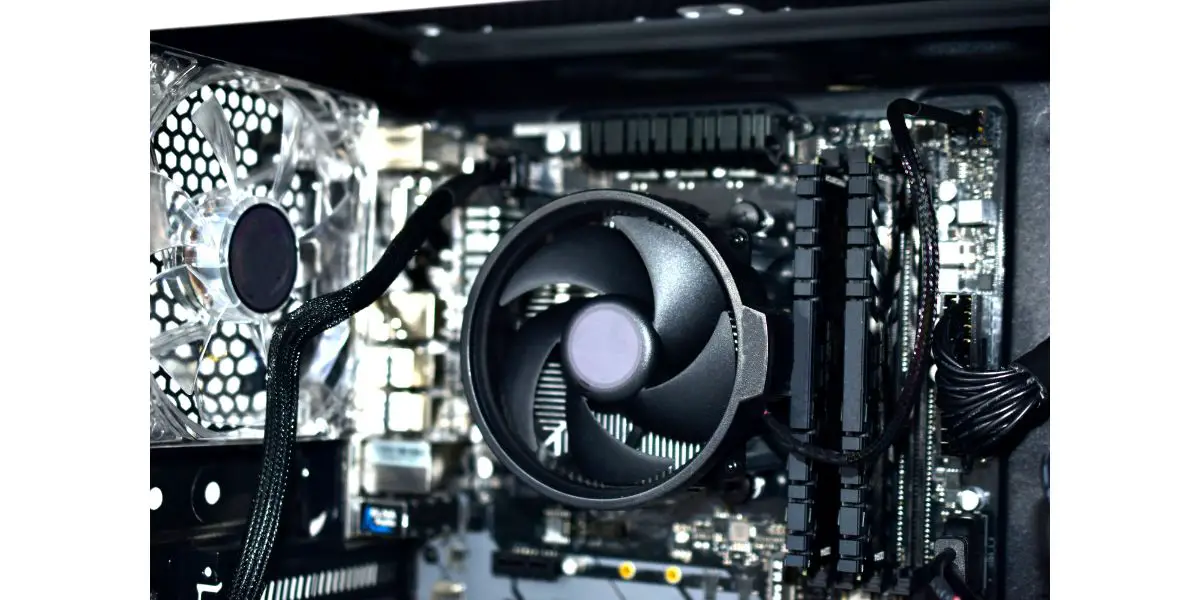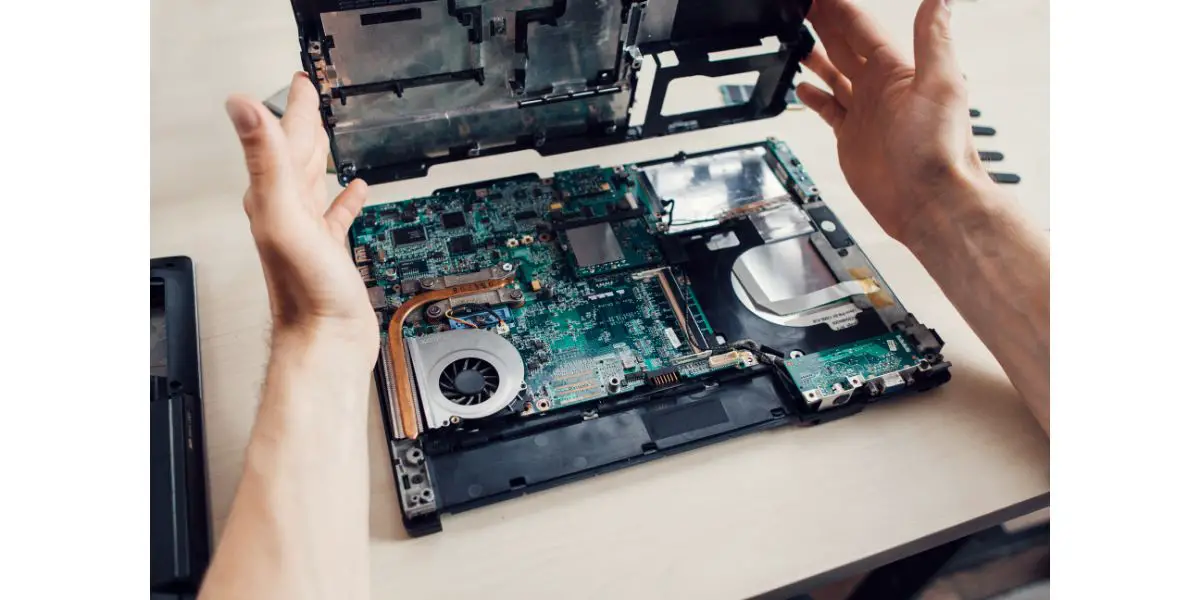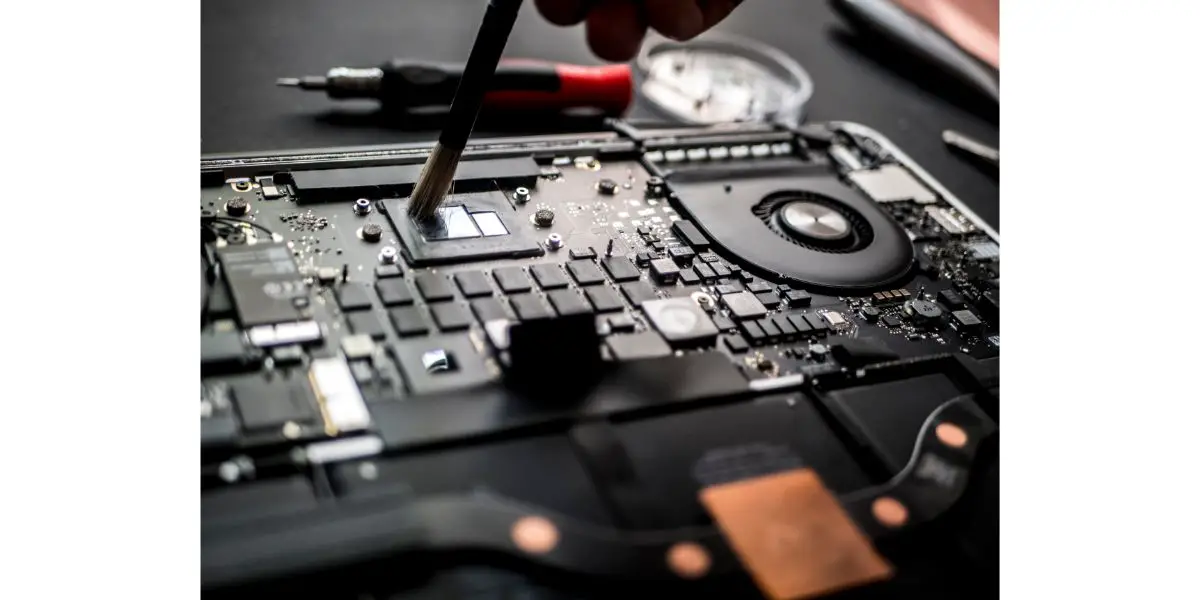Disclaimer: This post may contain affiliate links, meaning we get a small commission if you make a purchase through our links, at no cost to you. For more information, please visit our Disclaimer Page.
Your motherboard gets hot due to a combination of factors, including overclocking, limited airflow, dust accumulation, and high power consumption. These factors all impede the motherboard’s cooling process, damage the component and shorten the lifespan of other system parts.
In this article, we’ll explore the factors contributing to hot temperatures on a motherboard, discuss the consequences of those high temperatures, and offer solutions to keep it cool, so read on!
Table of Contents
How To Lower Motherboard Temps
One of the most important components in a computer is the motherboard, as it acts as the central hub for all the other components to connect. Without the motherboard, all the other components would not be able to function.
However, a common problem that many users experience is that their motherboard gets hot. As it is the central hub of all information flow in a computer, it makes sense that this component is prone to overheating.
But an overheated motherboard can lead to reduced performance, system crashes, and long-term damage.
You can lower your motherboard temps by improving airflow, managing dust, using cooling products (such as heatsinks and fans), and limiting power consumption.
All these improvements to your motherboard involve installing extra fans, keeping dust out of the computer, using thermal paste, and monitoring your power consumption.
You can implement several solutions to lower the temperature of your motherboard, depending on the source of the problem with your system temperature.
Improve Airflow and Clean Your System
Improving the airflow within your computer is an effective way to lower the temperature of your motherboard.
You can improve the airflow by installing additional fans to help circulate cool air throughout the computer or using plug-in USB fans. Also, rearranging the fans inside the computer to allow for better airflow can help lower the temperature.
It goes without saying that you shouldn’t meddle with the inner workings of your computer if you aren’t familiar with it. Always take your computer to a professional if necessary.
Dust buildup inside the computer can also impede the cooling and cause the temperature to rise, so using dust filters to minimize dust buildup is also important.
A simple can of compressed air is a quick fix if you notice you already have dust accumulation. An air compressor or a vacuum could also work, but remember to use these at the gentlest setting possible.
Install Cooling Products
Cooling products such as heatsinks, fans, or liquid cooling systems can lower your motherboard’s temperature. Heatsinks are devices designed to dissipate heat away from the processor, while fans help circulate cool air through the computer.
These cooling solutions can go a long way in keeping your motherboard cool. Liquid cooling systems are also an option. However, it is important to note that they are more complex to install and maintain.
You can learn more about cooling solutions that typically come with motherboards from my article here, where we explain why the motherboard needs cooling.
Manage Power Usage
Power management is also a key factor in reducing motherboard temperature. By reducing the power consumption of your computer, you can also lower the temperature.
Reducing power consumption can be achieved by using power-saving settings in your operating system or by using power management software. Additionally, you can also use a power supply unit with a higher efficiency rating, which will result in less heat being generated.
If you’re using an Intel CPU, they have detailed support guides for troubleshooting and installing additional temperature-reducing solutions. Each build has different needs and requirements, so check with your specific manufacturer’s documentation.
It’s important to regularly check the temperature of your motherboard and quickly take action if you notice the temperatures are high. With a little bit of attention and care, you can keep your computer running cool and prolong the lifespan of your machine.
Causes of Hot Motherboard Temperatures
Hot motherboards are clearly a problem. However, all electronics tend to produce heat, so it can be difficult to know exactly when you’re dealing with a problem and its possible causes.
So, what temperature is safe for your motherboard? Between 86 and 104 degrees Fahrenheit (30 and 40 degrees Celsius) is generally considered a safe range for standard motherboards. However, it’s important to check the specifications of your motherboard to determine its safe operating temperature, as different motherboards have different temperature ranges.
Understanding the factors contributing to high temperatures on a motherboard will help keep your computer running at peak performance. Some of the most common causes of high motherboard temperature include the following.
Overclocking
Overclocking refers to increasing the clock speed of a computer’s processor above its factory-set speed. This practice is typically done to improve CPU performance so that it functions in a stable way at faster speeds.
However, overclocking does have detrimental effects on your computer’s components and affects their lifespan. Primarily, the practice can cause the processor to generate more heat, leading to higher temperatures on the motherboard.
When overclocked, the processor consumes more power and generates more heat, which can cause the motherboard’s temperature to rise. If you’re going to overclock your processor, be sure that you install additional cooling solutions.
Always be careful when you’re messing with the CPU because overclocking it too far with lead to overheating and, subsequently, a damaged computer.
Poor Airflow
Airflow plays a crucial role in keeping the motherboard cool. If the computer’s case is not properly ventilated or the internal components are blocking airflow, the temperature inside the case can rise quickly.
This increase in internal temperature will, in turn, lead to high temperatures on the motherboard. Airflow issues leading to overheated motherboards are particularly true for computers in small or poorly ventilated spaces.
Dust Accumulation
Dust can build up inside a computer over time, clogging the air vents and impeding the cooling of the internal components. Clogged air vents can cause the temperature inside the case to rise and lead to high temperatures on the motherboard.
Dust buildup can also impede the cooling of the fans, which can cause the motherboard’s temperature to rise.
Power Usage
The more power a computer consumes, the more heat it generates. High power consumption can cause the temperature inside the case to rise, which can lead to high temperatures on the motherboard.
Overheating caused by increased power consumption is particularly true for computers running resource-intensive applications or connected to multiple power-hungry devices.
Possible Consequence of Hot Motherboards
Allowing your motherboard to overheat can even lead to the destruction of the motherboard and other critical internal components, as we outline here. Here’s a rundown of the possible consequences you could be facing if you don’t take the steps above to limit your motherboard temperature.
System Crashes and Failures
High temperatures can also lead to system crashes and failures, as the heat can cause the processor to shut down or cause other components to malfunction.
Processor failure and malfunction can result in data loss, corruption, or the need for costly repairs. Examples of failures that can occur due to high temperatures include, but are not limited to; system crashes, kernel panics, system hang, frequent blue screens of death, and data loss.
In fact, NovaBackup, a leader in data protection and recovery, cites overheating as the number one cause of data loss. They suggest that as high as 40% of all consumer data loss stems from misused and improperly cared-for technology, stressing the importance of the preventative steps above.
Reduced Component Lifespan
High temperatures can also shorten the lifespan of other components in the computer, including the processor, memory, and storage drives. The heat generated by the motherboard can cause these components to degrade more quickly, leading to reduced performance and an increased likelihood of failure.
Specifically, the components most affected by high temperatures are the processor, memory, and storage drives. These components are heat-sensitive and can degrade quickly when exposed to high temperatures. If those components do degrade, you’re looking at significant or complete data loss.
Damage to the Motherboard
High temperatures can cause damage to the motherboard by warping or cracking the circuit board or by melting or damaging the components.
This kind of warping and melting can result in the motherboard becoming inoperable or in the loss of functionality of one or more components. In each of these scenarios, complete replacement is almost always necessary.
High temperatures can cause a chain reaction of problems, and the consequences of high temperatures can be severe and expensive.
By keeping the temperature of your motherboard within a safe operating range, you can help to protect your computer, prevent data loss, and avoid a hit to your bank account balance.
Conclusion
Factors such as overclocking, poor airflow, dust buildup, and high power consumption can cause your motherboard to reach blistering temperatures.
Implementing solutions like improved airflow, cooling products, and managing power consumption can protect your computer and prolong the lifespan of its components.



